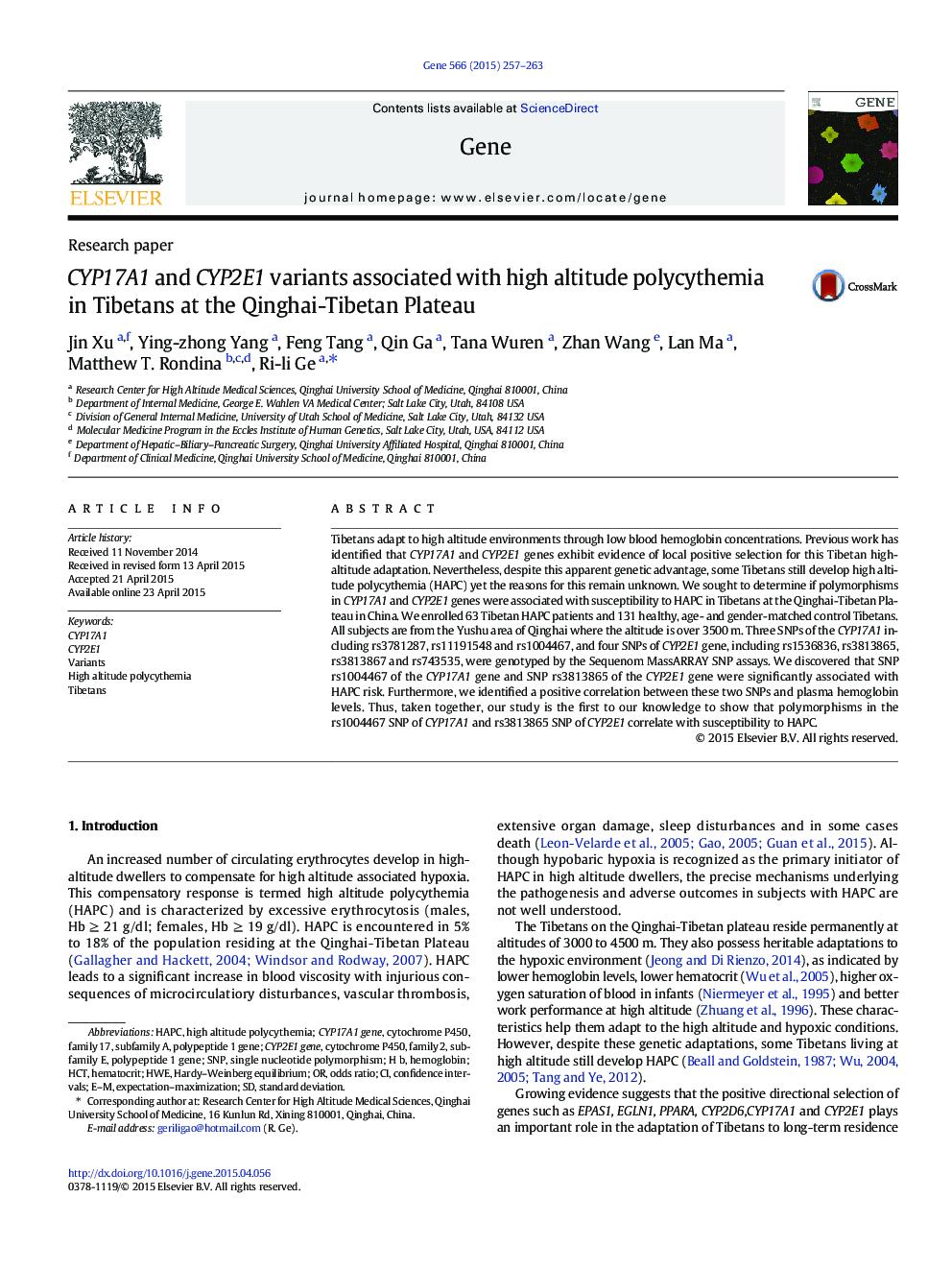| Article ID | Journal | Published Year | Pages | File Type |
|---|---|---|---|---|
| 2815615 | Gene | 2015 | 7 Pages |
Abstract
Tibetans adapt to high altitude environments through low blood hemoglobin concentrations. Previous work has identified that CYP17A1 and CYP2E1 genes exhibit evidence of local positive selection for this Tibetan high-altitude adaptation. Nevertheless, despite this apparent genetic advantage, some Tibetans still develop high altitude polycythemia (HAPC) yet the reasons for this remain unknown. We sought to determine if polymorphisms in CYP17A1 and CYP2E1 genes were associated with susceptibility to HAPC in Tibetans at the Qinghai-Tibetan Plateau in China. We enrolled 63 Tibetan HAPC patients and 131 healthy, age- and gender-matched control Tibetans. All subjects are from the Yushu area of Qinghai where the altitude is over 3500Â m. Three SNPs of the CYP17A1 including rs3781287, rs11191548 and rs1004467, and four SNPs of CYP2E1 gene, including rs1536836, rs3813865, rs3813867 and rs743535, were genotyped by the Sequenom MassARRAY SNP assays. We discovered that SNP rs1004467 of the CYP17A1 gene and SNP rs3813865 of the CYP2E1 gene were significantly associated with HAPC risk. Furthermore, we identified a positive correlation between these two SNPs and plasma hemoglobin levels. Thus, taken together, our study is the first to our knowledge to show that polymorphisms in the rs1004467 SNP of CYP17A1 and rs3813865 SNP of CYP2E1 correlate with susceptibility to HAPC.
Keywords
Related Topics
Life Sciences
Biochemistry, Genetics and Molecular Biology
Genetics
Authors
Jin Xu, Ying-zhong Yang, Feng Tang, Qin Ga, Tana Wuren, Zhan Wang, Lan Ma, Matthew T. Rondina, Ri-li Ge,
